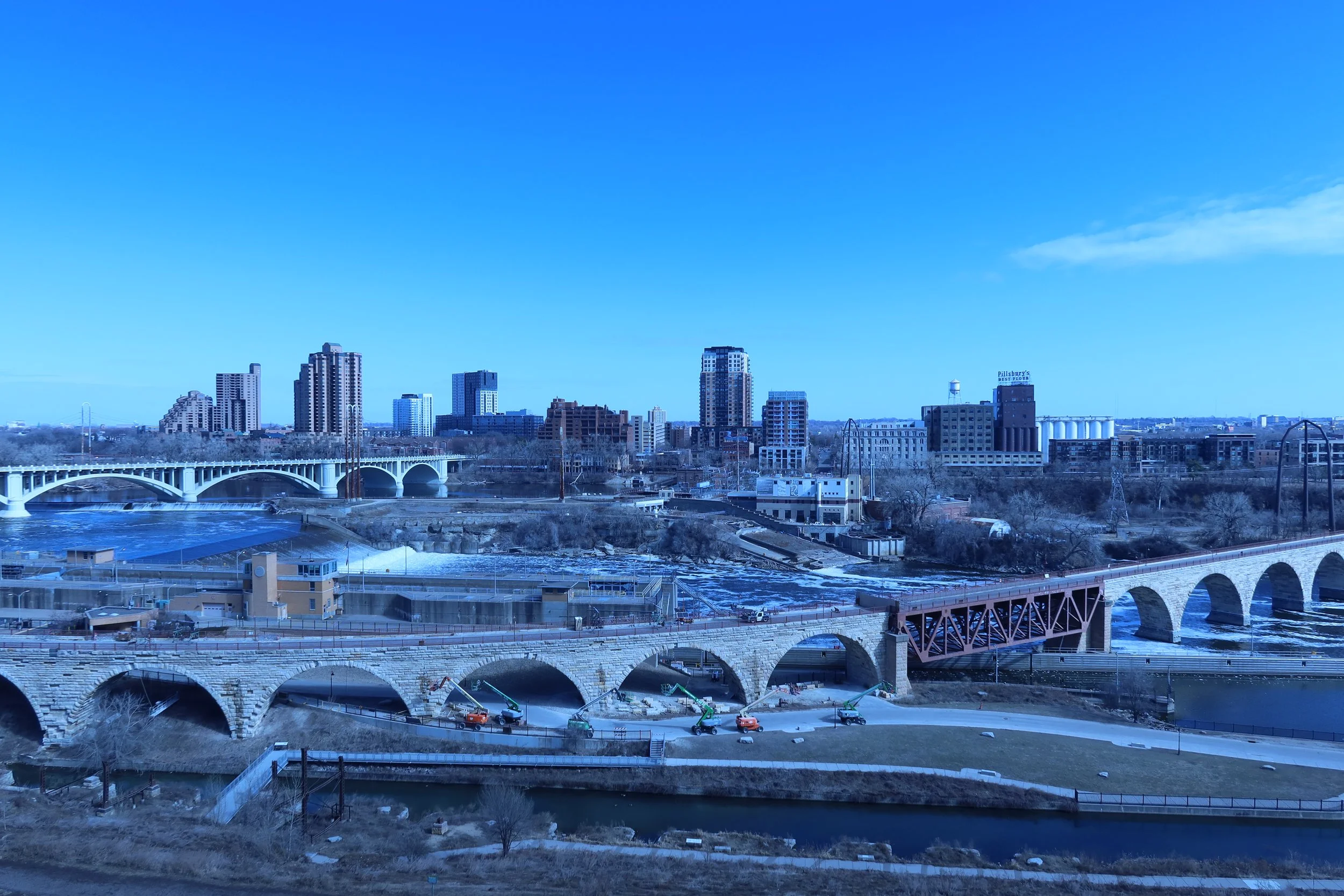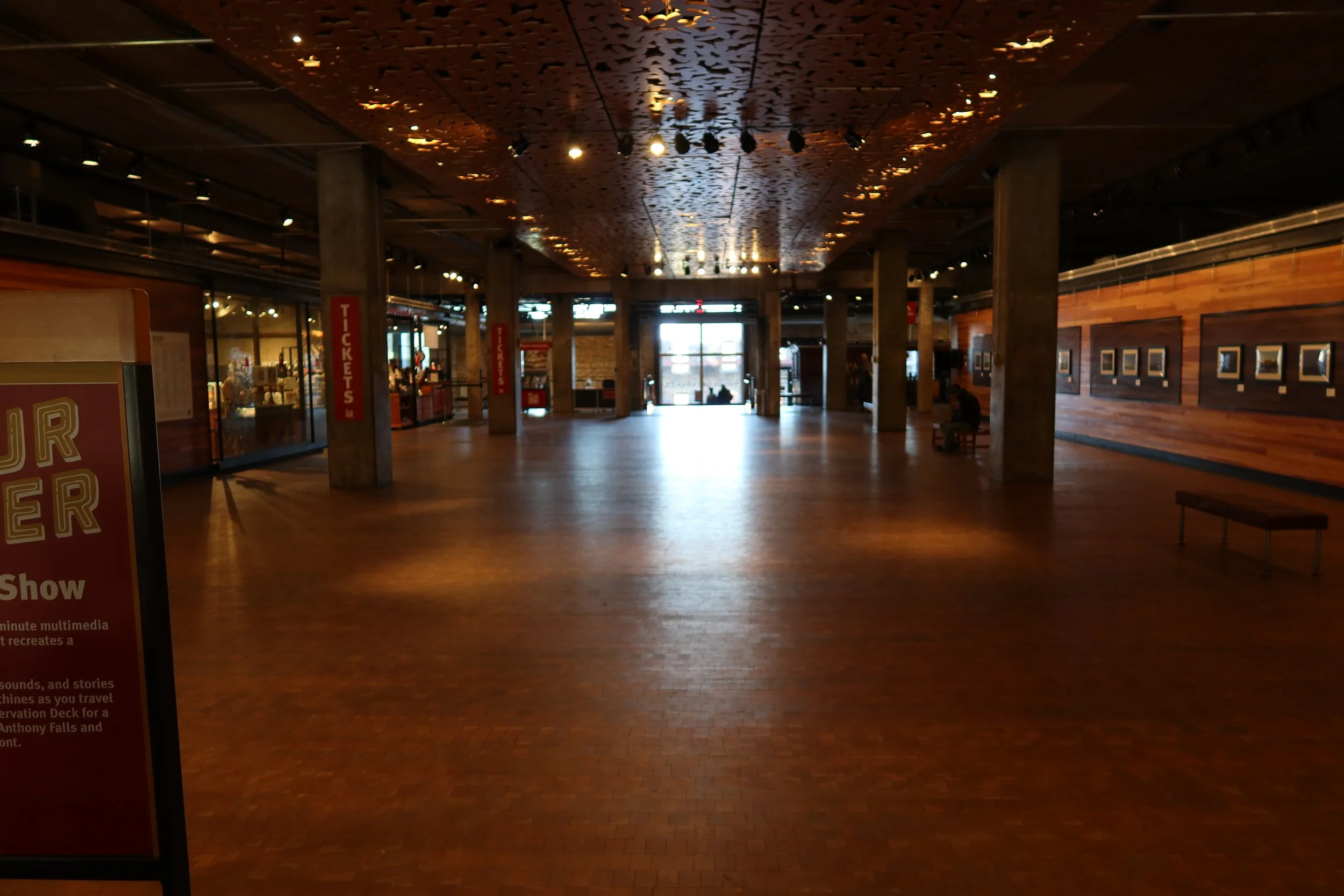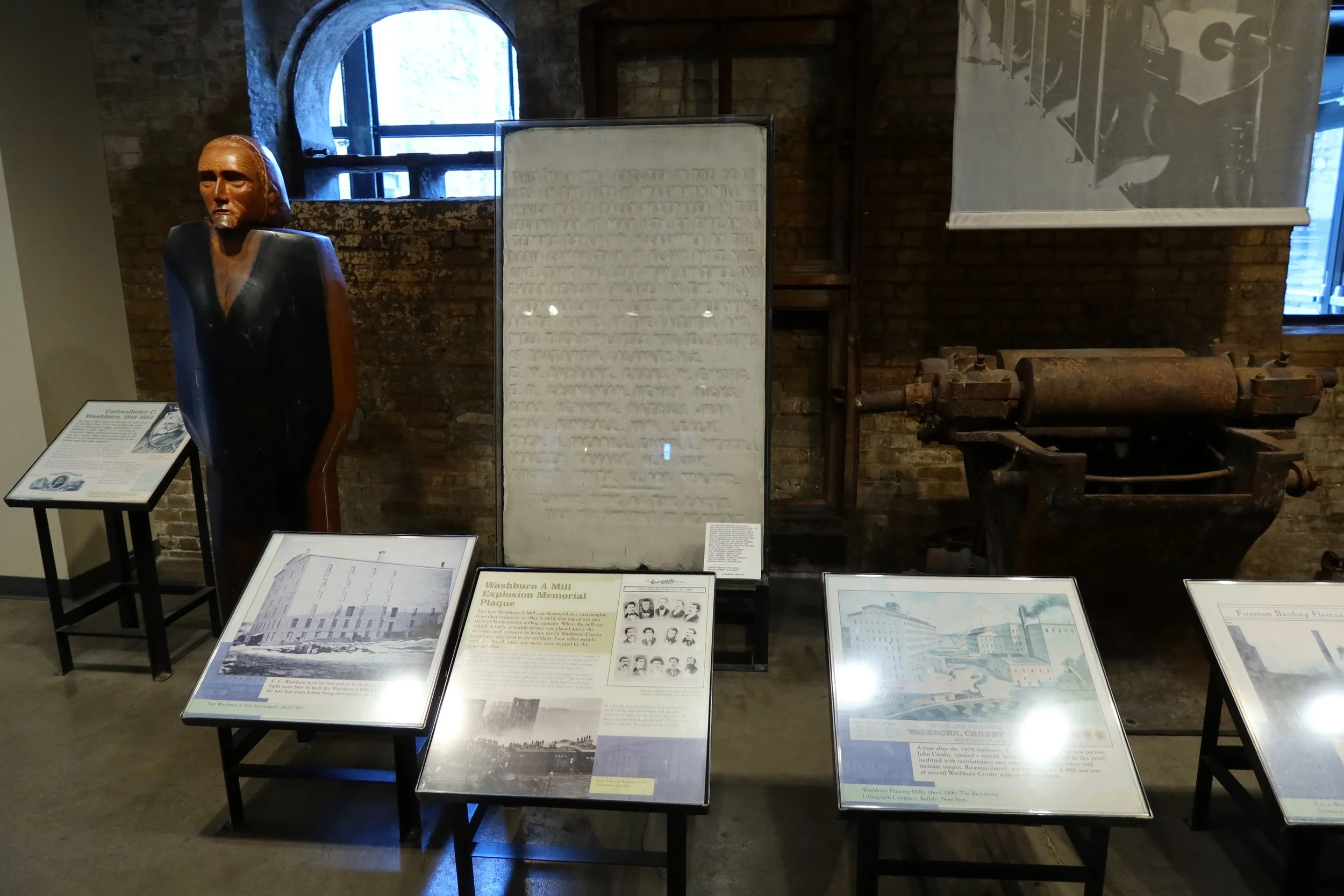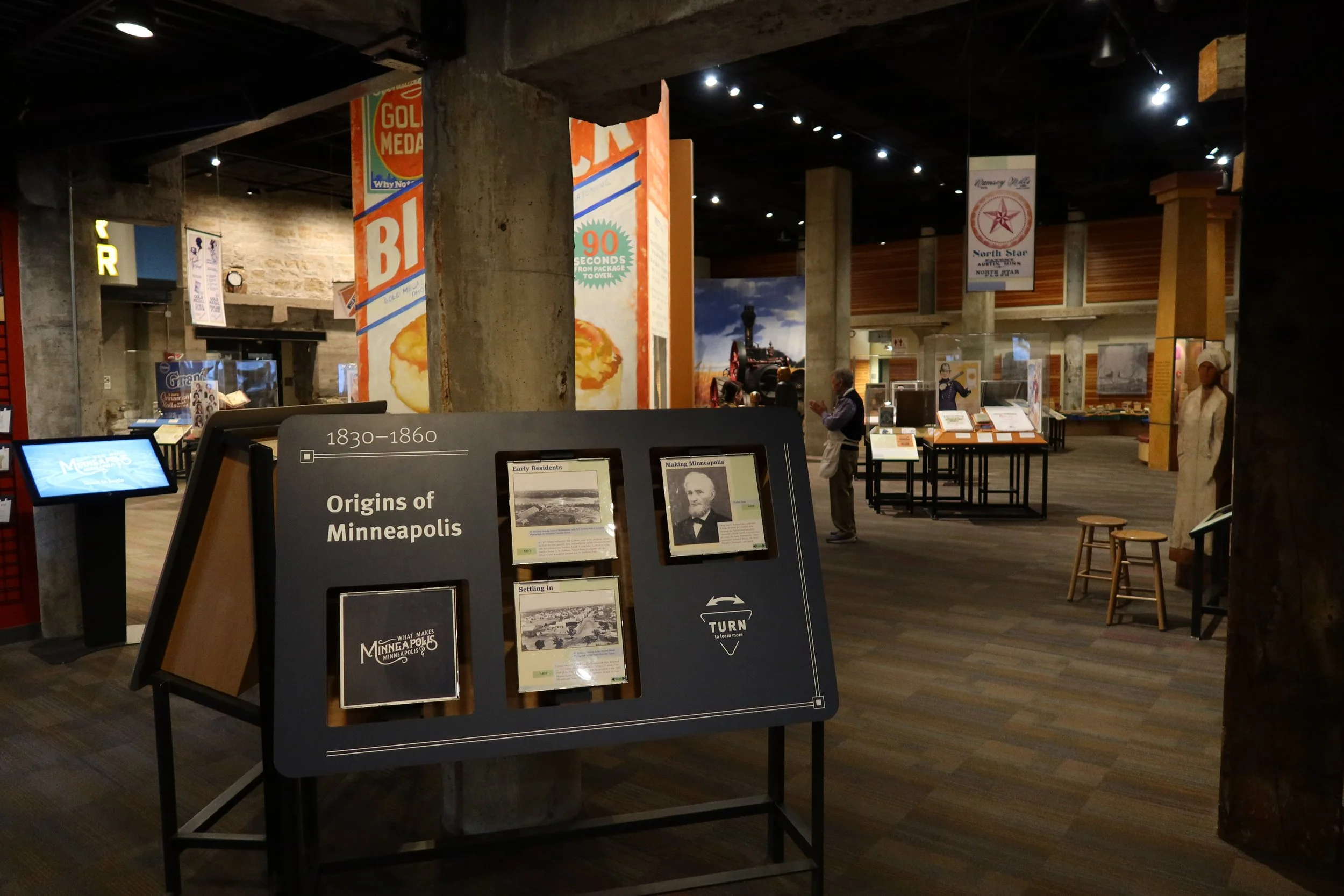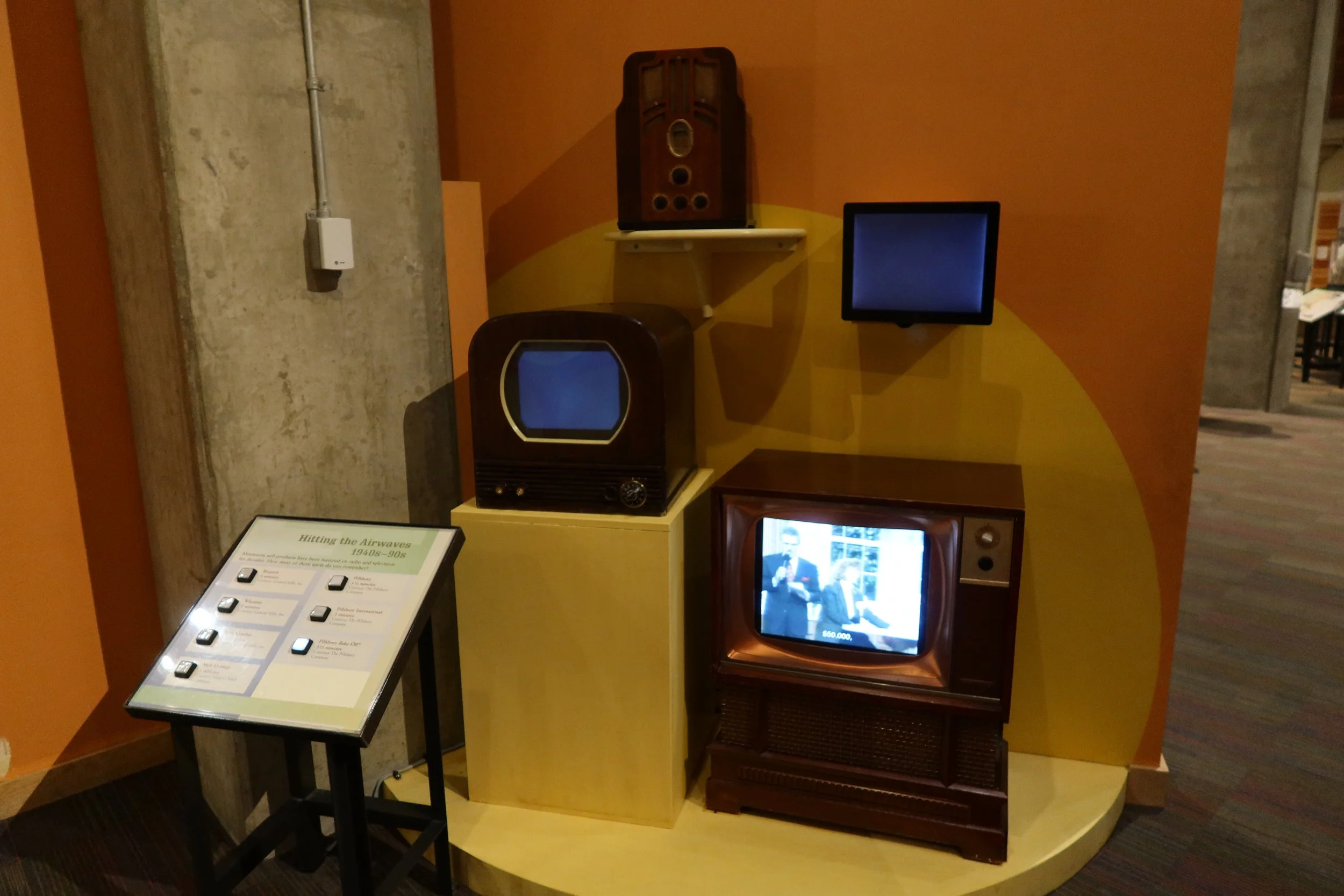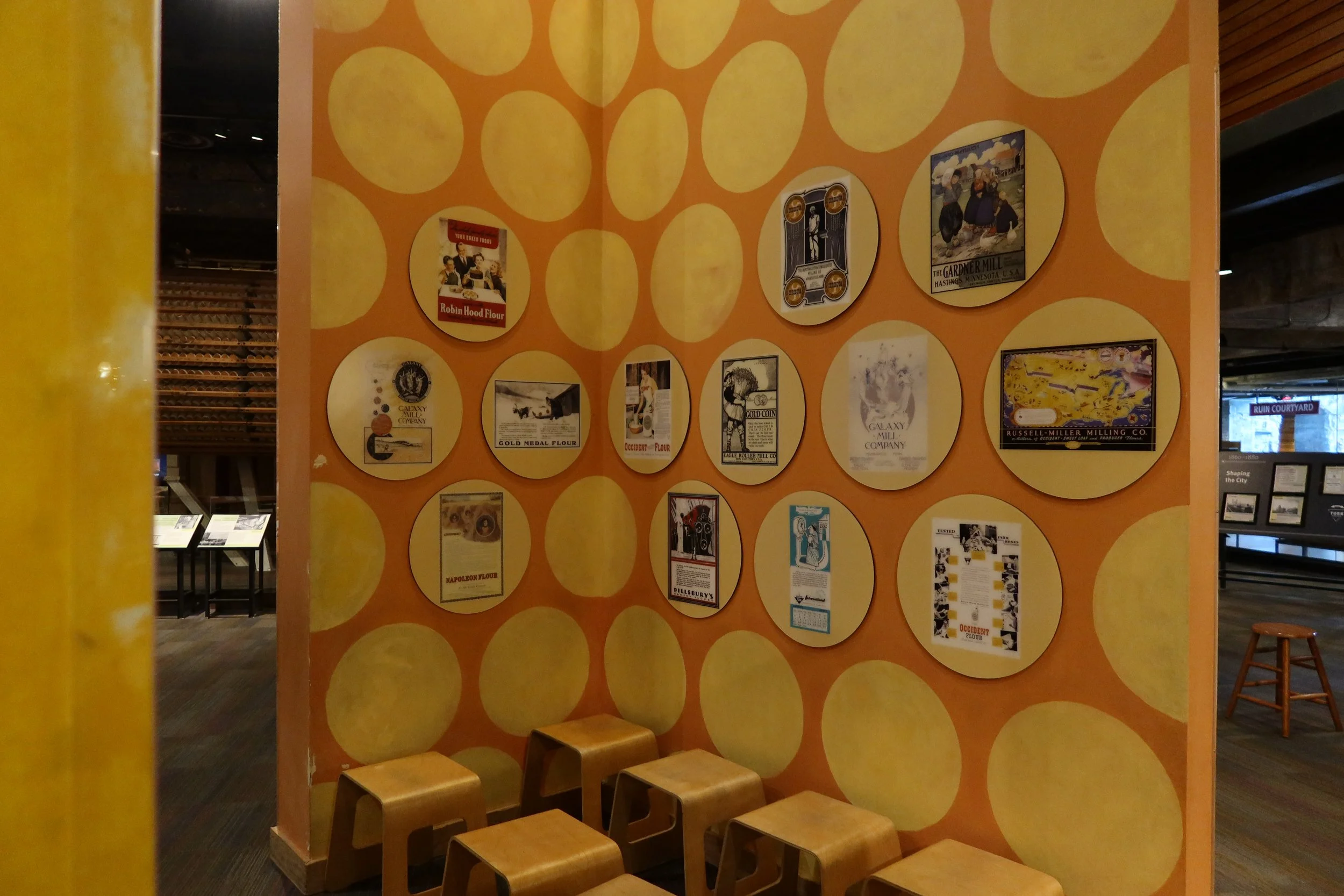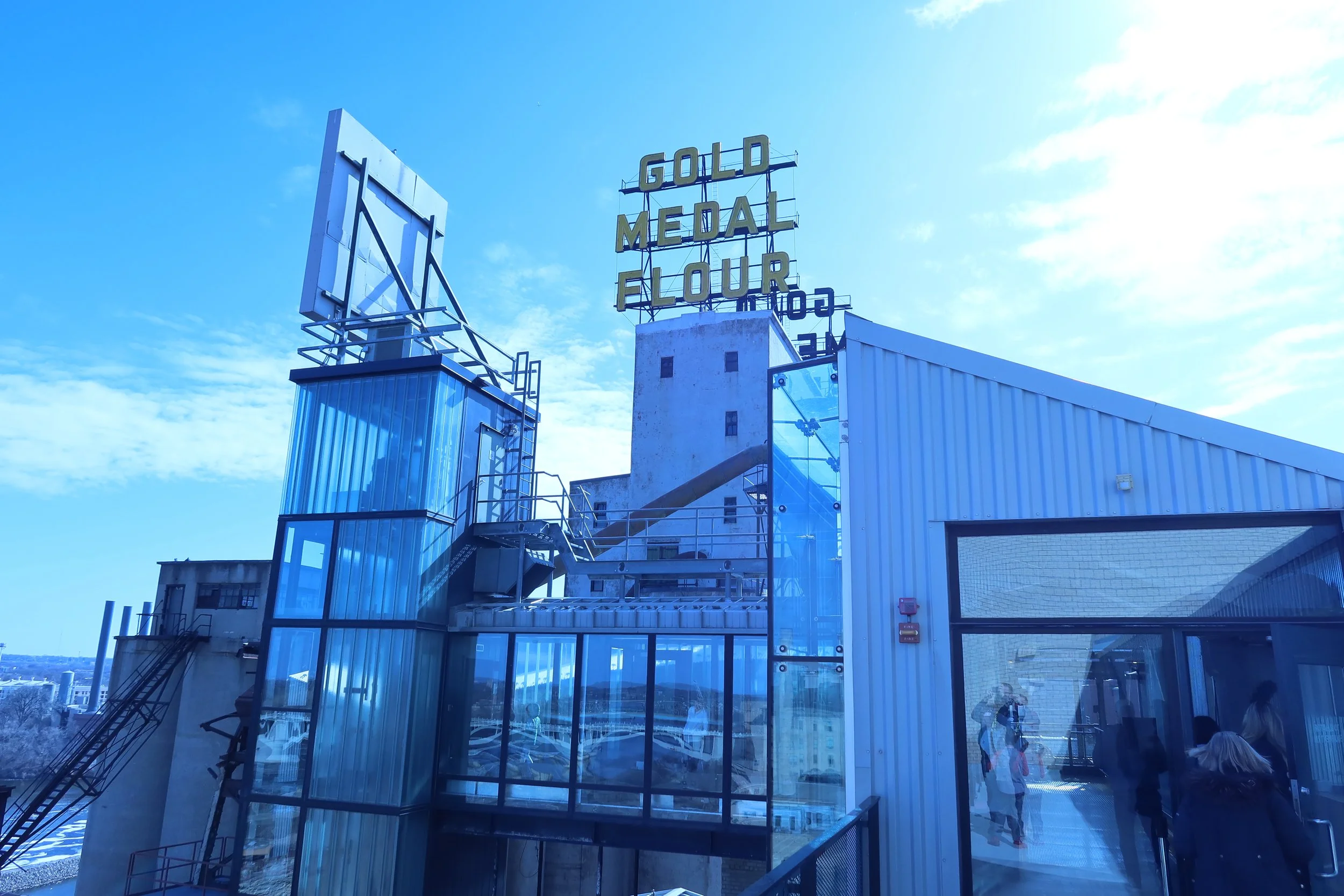Mill City Museum
The iconic Stone Arch Bridge as seen from the observation deck of the Mill City Museum.
Yesterday, I explored one of Minneapolis’ most iconic historical landmarks—the Mill City Museum, nestled along the Mississippi River in the shell of what was once the largest flour mill in the world. The museum masterfully blends industrial ruins with interactive exhibits, hands-on history, and sweeping city views. It’s gritty, honest, and surprisingly fun.
The Flour Tower & 19 Minutes Flat
My visit kicked off with two of the museum's standout features:
The Flour Tower, a multimedia elevator show, lifts visitors through multiple floors while telling the story of the people, machines, and operations that once drove Minneapolis’ flour industry.
Minneapolis in 19 Minutes Flat, a fast-paced film narrated by Kevin Kling, captures the humor and heart of the city’s evolution. Perfect for newcomers or locals who want a fresh take.
Entrance to the museum.
These two experiences alone were worth the ticket price.
Ruins, Tragedy, and Resilience
Next, I spent time in the Ruin Courtyard and surrounding exhibits focused on the 1878 Washburn A Mill explosion, one of the deadliest industrial accidents in U.S. history. Rusted machinery, stone memorials, and archival photos paint a sobering picture of the dangers mill workers faced—and how their legacy shaped modern safety standards.
The museum doesn’t shy away from the grim—there's reverence in how it presents the past.
Milling History, From Grain to Gold
The museum is full of hands-on exhibits and massive preserved machines that walked me through the evolution of flour milling. I got a better sense of how water power drove production and how companies like Gold Medal Flour became household names. A huge wooden wheat kernel and a model of a grain elevator added a fun, educational touch.
The original milling equipment is awe-inspiring up close—complex, raw, and surprisingly beautiful.
Hitting the Airwaves & Advertising
One unexpected gem was the section on radio and television advertising, featuring vintage sets from the 1940s to the 1980s. It made me think about how deeply intertwined flour and American culture have been—from radio jingles to retro print ads.
A cozy corner lined with historic flour branding showed how marketing helped shape everything from baking trends to home economics.
Observation Deck Views
From the top of the Flour Tower, I stepped out onto the observation deck and took in panoramic views of the Mississippi River, the Stone Arch Bridge, and downtown Minneapolis. It’s a stunning reminder of the city’s relationship with industry, nature, and innovation.
Definitely bring your camera—the views are worth the trip alone.
Great for Families
One of the best parts? It’s a place where kids and adults can learn together. Interactive wooden figures, touchable exhibits, and plenty of visual storytelling kept the younger visitors engaged. I even caught a few priceless moments—like a child face-to-face with a carved wooden mill worker, totally immersed.
Final Thoughts
The Mill City Museum isn’t just about flour—it’s about people, power, invention, and place. It's an honest, artful look at how Minneapolis became the Mill City and why that matters today. Whether you’re a history buff, a curious traveler, or a local looking to rediscover your roots, this museum delivers.
